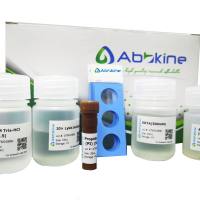DNA-Dependent Protein Kinase in Apoptosis
互联网
1424
Programmed cell death or apoptosis can be induced by a variety of mechanisms including genotoxic stress ( 1 - 3 ). The initiation of apoptosis involves the activation of a proteolytic cascade reminiscent of the blood-clotting pathway or activation of pancreatic proteases ( 4 ). It has been suggested that a single DNA strand break or persistent DNA adduct is sufficient to induce apoptosis ( 5 ). The protease cascade allows for the amplification of the initial signal and results in the degradation of cellular proteins and chromosomal DNA, which are packaged into apoptotic bodies and subsequently removed and recycled by phagocytic cells. The proteases involved in apoptosis employ active site cysteine residues, which catalyze the hydrolysis of the peptide bond following specific aspartic acid residues ( 6 ). This class of proteases has been termed caspases for cysteinyl, aspartate-specific proteases. A current view of the caspase cascade is presented in Fig. 1 . Genotoxic stress results in the generation of an as yet signal that results in the release of cytochrome C from the intermembrane space of mitochondria into the cytoplasm. It is in the cytoplasm that cytochrome C can form a complex with apocaspase 9, apoptotic protease activating factor-1 (Apaf-1) and deoxyadenosine 5’triphosphate (dATP). This complex is competent for the autoproteolytic activation of caspase-9 ( 7 ). Active caspase-9 then cleaves apocaspase-3 to generate an active caspase-3, which is responsible for cleaving specific target proteins, one of which is the catalytic subunit of DNA-dependent protein kinase (DNA-PKcs). The antiapoptotic factor Bcl-xL can sequester cytochrome C and inhibit the formation of the caspase-9-Apaf-1 complex effectively blocking apoptosis ( 8 ). The proapoptotic factor Bcl-xS promotes apoptosis by binding to Bcl-xL and thus blocking the inhibitory effect of this protein ( 8 ).
Fig. 1. Programmed cell death pathway in response to genotoxic stress.









